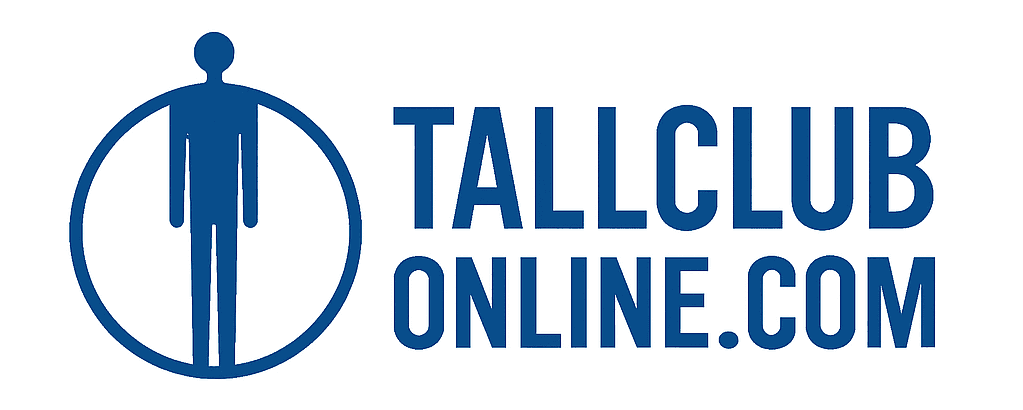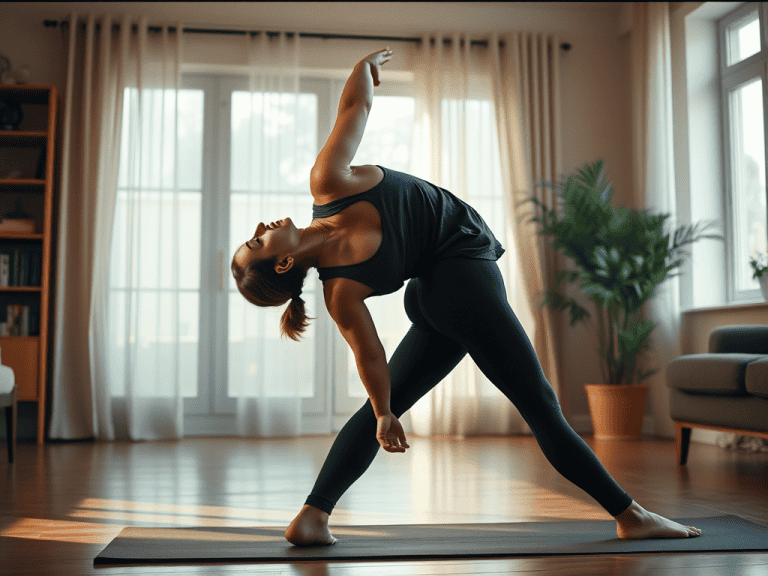Top 10 Health Challenges for Tall People – And How Fitness Can Help

Being tall comes with many advantages, whether it’s on the basketball court, reaching high shelves, or standing out in a crowd. However, tall individuals often face unique health challenges that shorter people may not experience. Fortunately, these challenges can be managed or mitigated through targeted fitness routines and lifestyle adjustments.
In this article, we will cover the top 10 health challenges tall people face and explore how a well-designed fitness plan can help address these concerns, ultimately improving overall health and quality of life.
Top 10 Health Challenges for Tall People
1. Back Pain and Posture Issues
Tall people are more likely to experience back pain due to their long spines, which may not always align properly. Poor posture is another common issue, as taller individuals may slouch or round their backs to compensate for their height.
How Fitness Helps:
Strengthening the core and focusing on posture exercises can significantly reduce back pain. Exercises like planks, deadlifts, and yoga can help align the spine and improve posture.
2. Joint Pain, Particularly in the Knees and Hips
Tall people, especially those over 6 feet, often experience more strain on their knees and hips due to the longer lever arms. This can lead to joint pain, particularly during high-impact sports or activities.
How Fitness Helps:
Low-impact exercises like swimming or cycling can be gentler on the joints while still providing an excellent workout. Strength training exercises for the legs, such as lunges and squats, can also help build muscle around the joints and reduce strain.
3. Flexibility and Mobility Issues
Tall individuals often have tight hamstrings and hips, leading to limited flexibility and mobility. This can affect movement quality and contribute to pain or discomfort.
How Fitness Helps:
Stretching and mobility work are crucial for tall people to maintain a full range of motion. Incorporating daily dynamic stretching and focusing on yoga or Pilates will help improve flexibility and joint mobility.
4. Increased Risk of Overuse Injuries
Due to their height, tall people may be more prone to overuse injuries, particularly in sports that require repetitive motions, like running or basketball. The added stress on the body can lead to injuries like tendinitis or shin splints.
How Fitness Helps:
Cross-training can help prevent overuse injuries by varying the types of exercises you do. Incorporating both strength training and cardio exercises, along with ample recovery time, can help reduce the risk of these injuries.
5. Poor Circulation
Tall individuals often experience poor circulation, especially in their legs. This can be due to the longer distance blood has to travel, which may lead to swelling, varicose veins, or fatigue.
How Fitness Helps:
Regular cardiovascular exercise like walking, cycling, or swimming promotes better blood flow throughout the body. Leg exercises, such as calf raises or leg lifts, can improve circulation and reduce swelling.
6. Increased Risk of Heart Disease
Studies suggest that tall individuals may have a slightly higher risk of developing heart disease, potentially due to factors like higher blood pressure and cholesterol levels.
How Fitness Helps:
Regular aerobic exercise like running, cycling, and brisk walking can lower the risk of heart disease. Combined with a balanced diet, these exercises can help maintain healthy blood pressure and cholesterol levels.
7. Difficulty Finding Properly Fitting Clothing and Equipment
Tall individuals often struggle to find clothing and fitness gear that fits properly. Whether it’s shoes, clothing, or sports equipment, the wrong fit can lead to discomfort and even injuries.
How Fitness Helps:
Choosing customized or tall-specific fitness gear can help avoid discomfort during workouts. Many stores now offer tall-sized clothing and shoes specifically designed to meet the needs of taller individuals. Proper sports equipment designed for your height can also improve your performance and reduce the risk of injury.
8. Sleep Issues
Tall people sometimes have trouble sleeping, particularly due to finding a comfortable sleeping position that supports their back and neck. This can lead to sleep disruptions and a poor-quality rest.
How Fitness Helps:
Exercises that promote relaxation and reduce stress, such as yoga and meditation, can improve sleep quality. Additionally, core and back strengthening exercises can help alleviate tension and promote better posture during sleep.
9. Strain from Bending or Reaching
Taller individuals often experience strain from activities that involve bending down or reaching up, such as picking things off the floor or reaching for high shelves.
How Fitness Helps:
Exercises that improve flexibility and balance, like yoga or Pilates, can make these everyday movements easier. A focus on improving core strength will also help alleviate strain during bending and reaching activities.
10. Mental Health Challenges
Some tall individuals may struggle with mental health challenges related to their height, such as feeling self-conscious or isolated. This can affect confidence and overall well-being.
How Fitness Helps:
Exercise is a powerful tool for improving mental health. Regular physical activity releases endorphins, which can help reduce stress and anxiety. Strength training and achieving fitness goals can also boost self-esteem and confidence.
How to Address These Challenges
Here are some strategies for tall people to address these common health challenges:
Strength Training: Focus on exercises that strengthen the core, legs, and back. Deadlifts, squats, and lunges are great for building strength and improving posture.
Stretching and Mobility: Incorporate yoga or dynamic stretching into your routine to improve flexibility and mobility.
Low-Impact Exercises: Activities like swimming or cycling can help reduce joint strain while still providing an effective workout.
Recovery: Allow for proper rest and recovery to prevent overuse injuries. Include stretching, foam rolling, and relaxation techniques in your routine.
Cardio: Regular cardiovascular exercise, such as walking, running, or cycling, can improve heart health and circulation.
Key Takeaways
Tall people face unique health challenges, including back pain, joint strain, and flexibility issues.
Fitness routines focused on strengthening the core, improving flexibility, and promoting joint health can help reduce these challenges.
Low-impact activities like swimming and cycling are excellent choices for reducing strain on the body.
Regular cardio and strength training are essential for improving overall health and preventing chronic conditions like heart disease and poor circulation.
FAQ: Health Challenges for Tall People
Q1: How can I reduce back pain as a tall person?
Focus on core strengthening exercises, such as planks and deadlifts, and make sure to incorporate regular stretching to improve posture and flexibility.
Q2: What exercises are best for tall people to prevent joint pain?
Low-impact exercises like swimming, cycling, and elliptical training are ideal for reducing stress on the joints.
Q3: Can yoga help with flexibility and mobility for tall people?
Yes! Yoga is highly beneficial for improving flexibility and mobility, especially for tall individuals who may have tight hips, hamstrings, or lower backs.
Q4: What type of cardio is best for tall people?
Low-impact cardio, such as swimming and cycling, is often the best choice for tall people, as it reduces the strain on the joints while improving cardiovascular health.






